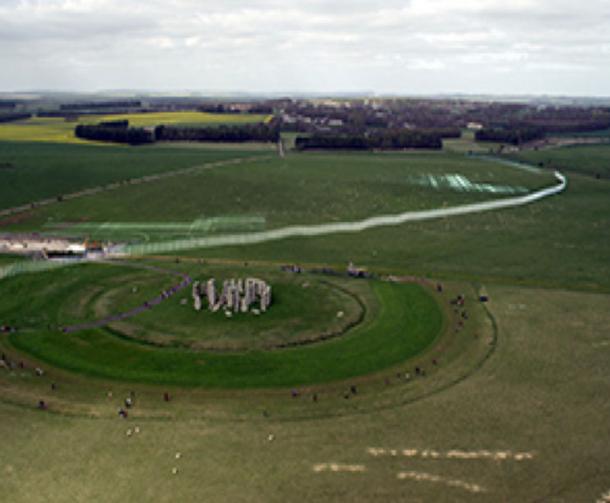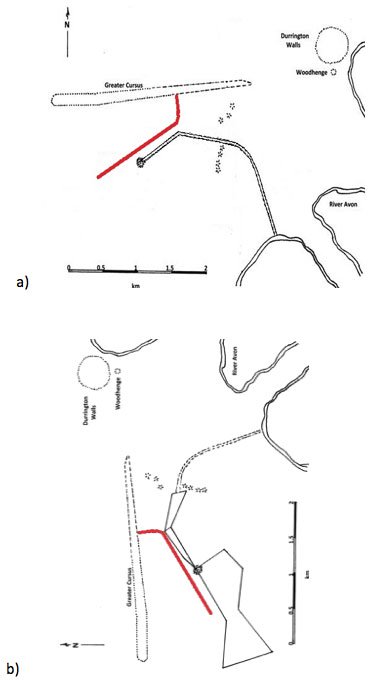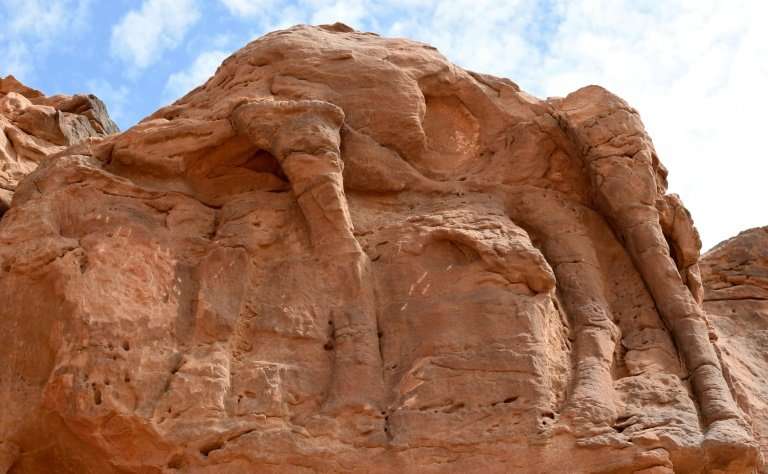At www.ancient-origins.net/ancient-places-europe/was-orion-heavenly-overlor… … in the 1960s a portion of ditch excavated from the chalk bedrock was discovered west of Stonehenge during construction of the pedestrian tunnel by the old visitor centre that was in use up to a couple of years ago (now replaced by a new visitor centre and walk way as the road has been closed). Geophys has sinced revealed the ditch extended for 900m (or nearly 3000 feet) from SW of the henge to a point close to the Greater Cursus monument, NW of Stonehenge. The ditch is orientated SW to NE and runs in a straight line for most of its course, veering to the NW as it approaches the Cursus. It is virtually 4 feet wide by 4 feet deep …
 … post holes were also found along the bottom of the ditch and these appear to have housed quite tall posts. They run along the entire length of the ditch which gave rise to the idea of a palisade. Archaeologists have since found similar structures elsewhere – tall wooden posts forming an alignment (were they a screen so that part of what was going on could not be seen by outsiders or the uninitiated) …
… post holes were also found along the bottom of the ditch and these appear to have housed quite tall posts. They run along the entire length of the ditch which gave rise to the idea of a palisade. Archaeologists have since found similar structures elsewhere – tall wooden posts forming an alignment (were they a screen so that part of what was going on could not be seen by outsiders or the uninitiated) …
 … there appears to be an internal aligment between the henge, the Avenue, the cursus and the palisade. The latter is estimated to have stood 20 feet hight (going by the size of the post holes). The reference to Orion is on the second page and comes from an alternative historian. Not very convincing.
… there appears to be an internal aligment between the henge, the Avenue, the cursus and the palisade. The latter is estimated to have stood 20 feet hight (going by the size of the post holes). The reference to Orion is on the second page and comes from an alternative historian. Not very convincing.
Meanwhile, at www.foxnews.com/science/2018/02/28/unprecedented-native-american-burial-… … sent in by William. A native American burial site hidden under the waters of the Gulf of Mexico, possibly for as long as 7000 years, has been discovered by divers. The site appears to have been a peat bottomed freshwater pond that became submerged (the southern coast of the US is gradually sinking). Peat slowed down the process of decay.
At https://phys.org/print438918862.html … we have rock art in the Saudi desert – of camels (moulded in the rocks). These rock sculptures are thought to be around 2000 years of age and contemporary with the caravan trade in frankincense and myrhh etc. Some of the rock sculptures have been vandalised.

